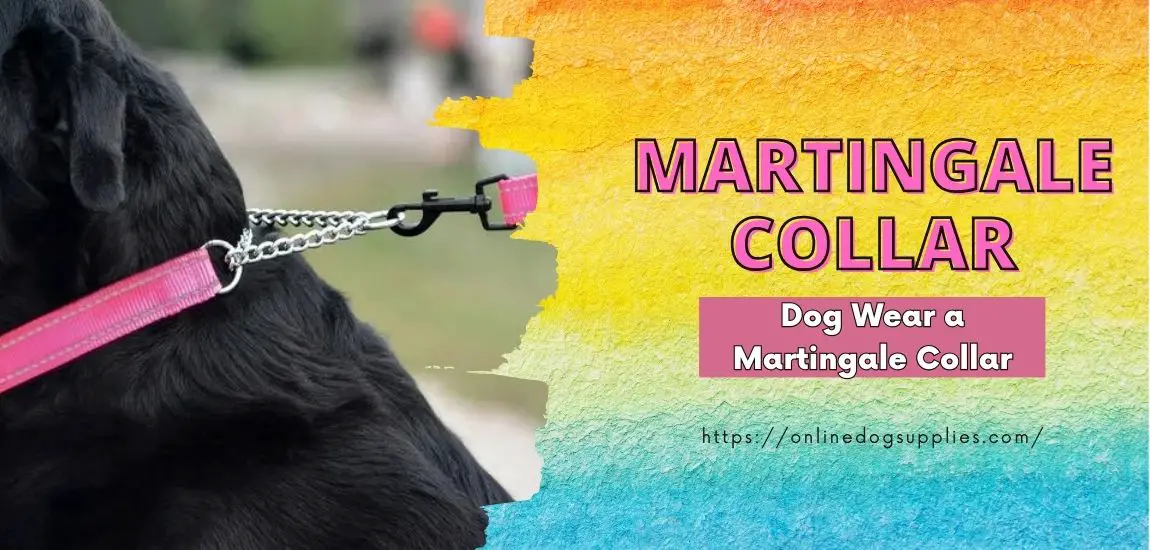Getting the fit of a martingale collar just right is important for both safety and effectiveness. As these collars are meant to tighten only when pulling occurs, improper adjustment can potentially cause discomfort or choking. In this post, we’ll cover How should a dog wear a martingale collar so it works as intended to curb pulling without hurting your pup.
Proper Sizing is Key
The first step is ensuring your dog’s martingale collar is the proper circumference. Measure around your dog’s neck where the collar will sit, about halfway down the neck. For sizes, aim for the martingale loop to fit snugly but still allow enough space to fit two fingers under the collar.
A loose collar won’t provide decent feedback against pulling and could allow your dog to slip out of it. But avoid going too small and constricting, especially for smaller or toy-breed dogs with delicate tracheas. Adjust the fixed loop so it’s just below the adjustable loop.
Start with a collar that’s very snug initially, as nylon and leather collars will stretch slightly over time. Be ready to size up if it becomes too loose after a few weeks of regular wear. Always check the fit during walks as well.
Adjusting the Tightness
Once you’ve got the correct size, it’s time to set the tightness. The martingale loop should be adjusted so it hangs loosely around your dog’s neck when they are standing or sitting calmly next to you without pulling.
It’s normal for this loop to tighten slightly when your dog looks around or walks. But avoid making it so tight that it stays constricted at all times. You want room for two fingers comfortably under the collar when your dog is relaxed.
As soon as pulling occurs against the leash clip, the limited slip closure should just barely begin to tighten, without choking or overly restricting movement. With practice, your pup will learn that pulling leads to an unwanted tightness they can control by walking calmly instead.
Attaching the Leash
For a martingale collar to work as intended, the leash must attach to its fixed loop, not the adjustable one. Clip the leash onto this loop below the dog’s chin. This setup allows the limited slip mechanism to function properly and provide feedback against pulling.
Attaching the leash to anywhere else like the front clip of a harness defeats the purpose of the martingale design and its potential to curb lunging. Keeping your leash attached to the correct loop ensures your four-legged friend gets the message when testing their lead manners.
Using a Martingale Safely
Supervise your dog closely when first using a martingale to discourage any potential fear responses to the new sensation. Introduce it for short training sessions, rewarding calm behavior with treats and praise. Monitor for signs of stress like yawning, licking, or pulling at the collar.
As always, provide plenty of alternative positive reinforcement by hand-feeding treats when your pup chooses to walk calmly at your side instead of lunging ahead. With time and consistency, the martingale collar can condition better leash habits in many dogs when worn properly.
Conclusion About Dog Wear a Martingale Collar
Taking care to measure, adjust, and fit a martingale collar correctly from the start helps ensure it provides a safe, humane experience for your dog without risking injury or discomfort. With the leash attached to the fixed loop and reinforcement of loose leash walking, the martingale has the potential to shape improved walking manners over other collar types for some pullers. Monitor how your pup responds to find what works best.
FAQs About Dog Wear a Martingale Collar
Q: How often should I check my dog’s martingale collar fit?
A: It’s a good idea to check the fit anytime you notice it may have stretched or changed, like weekly for most dogs. Small dogs’ collars may need checking more often as they are more prone to rubbing.
Q: Can I use a martingale on a puppy?
A: Yes, but be especially careful of the fit on growing puppies. Check the collar tightness weekly as it develops to prevent it from becoming too tight. Focus on positive reinforcement instead of relying on the collar.
Q: What if my dog backs out of other collars?
A: A properly fitted martingale can help in these cases by preventing backing out while training. But high-pulling dogs still need training too. Consider a head collar or harness as well.
Q: Can martingales be harmful if fitted wrong?
A: Yes, like any collar, an ill-fitting martingale risks rubbing or constricting the trachea if too tight. Always carefully measure neck size and check the fit is not restrictive when relaxed.
Q: How long should my dog wear a martingale?
A: Most behavior experts recommend training sessions of 10-15 minutes multiple times daily, then switching to a flat collar. Switching up tools helps maintain interest in training.


